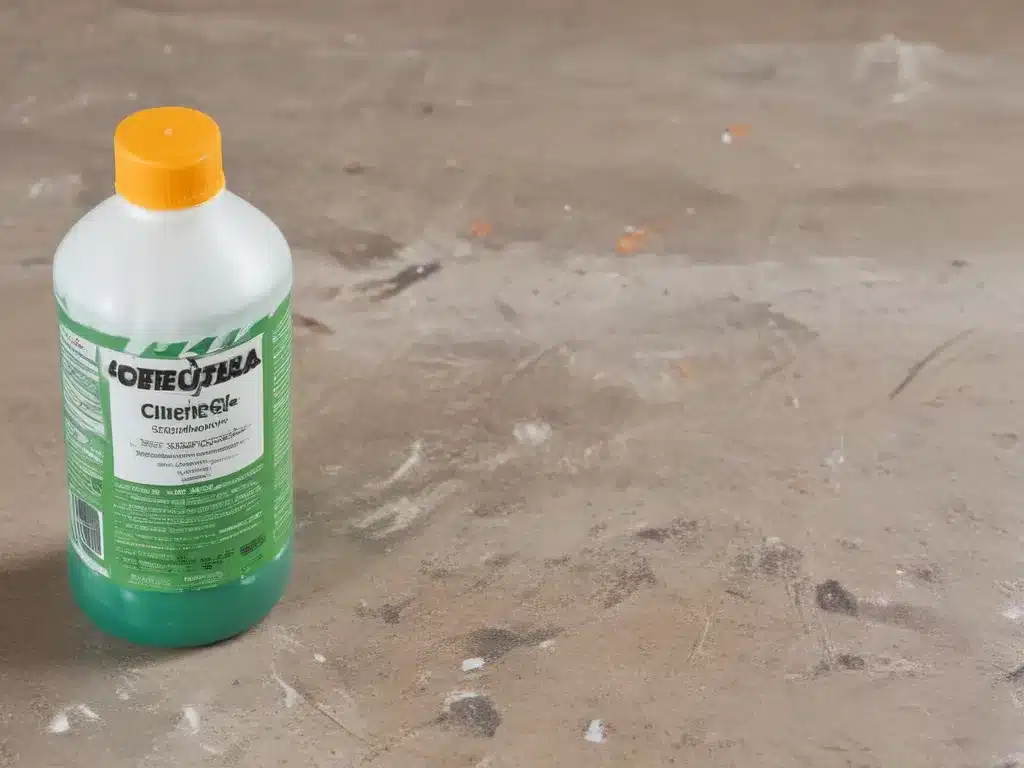Introduction
As a homeowner or business owner, handling chemical spills can be a daunting task. However, with the right knowledge and precautions, you can tackle DIY chemical cleanup safely and effectively. In this article, I’ll guide you through the entire process, covering essential steps, safety measures, and best practices.
Understanding Chemical Hazards
Chemicals come with varying degrees of hazards – some pose health risks, while others may be flammable or corrosive. It’s crucial to understand the nature of the chemical you’re dealing with. The chemical’s Safety Data Sheet (SDS) provides valuable information about its properties, hazards, and recommended handling procedures.
The SDS lists the chemical’s physical and chemical properties – whether it’s a solid, liquid, or gas, its boiling point, flash point, and reactivity with other substances. It also outlines potential health hazards, such as toxicity, carcinogenicity, and routes of exposure (inhalation, ingestion, or skin contact). Familiarizing yourself with this information is the first step in safe chemical cleanup.
Personal Protective Equipment (PPE)
Proper PPE is essential for protecting yourself during a chemical cleanup. The type of PPE required depends on the chemical’s hazards and the cleanup task at hand. Common PPE for chemical cleanup includes:
- Respiratory protection (respirators or masks)
- Chemical-resistant gloves
- Safety goggles or face shields
- Protective clothing (coveralls, aprons, or suits)
- Sturdy, closed-toe shoes or boots
Always refer to the chemical’s SDS for specific PPE recommendations. Ensure that your PPE fits correctly and is in good condition before use.
Containment and Cleanup Procedures
The first step in a chemical cleanup is containment – stopping the spill from spreading and preventing further contamination. Depending on the chemical and the size of the spill, you may need to use absorbent materials (such as spill pillows, socks, or granules), dikes, or temporary barriers.
Once contained, proceed with the cleanup process. This may involve using appropriate neutralizing agents, absorbents, or cleaning solutions recommended in the chemical’s SDS. Always work from the outside of the spill inward to avoid spreading the contamination.
For small spills, you can often handle the cleanup with basic tools and materials. However, for larger or more hazardous spills, it’s advisable to seek professional assistance from a biohazard cleaning company like AdamCleaning.uk.
Waste Disposal
Proper disposal of contaminated materials and waste is crucial to prevent environmental and public health risks. Follow the SDS guidelines for waste disposal, which may involve using specific containers, labeling, and disposal methods.
Some chemicals may require special disposal procedures or must be handled by licensed waste management facilities. Check with your local authorities or environmental agencies for specific regulations and disposal options in your area.
Decontamination and Cleanup Completion
After the initial cleanup, decontamination is essential to ensure no residual chemicals remain. This may involve thorough cleaning of surfaces, equipment, and any affected areas using appropriate decontamination solutions or methods specified in the SDS.
Once the cleanup and decontamination are complete, conduct a final inspection to ensure the area is safe for re-entry and use. Document the entire process, including the actions taken, materials used, and any incidents or observations.
Case Study: Chemical Spill in a Laboratory
To illustrate the importance of proper chemical cleanup, let’s consider a case study involving a chemical spill in a laboratory setting.
Imagine a scenario where a beaker containing a corrosive acid was accidentally knocked over, causing a spill on the laboratory bench and floor. The first step would be to evacuate the area and alert others in the vicinity to avoid exposure.
Next, consult the SDS for the specific acid to determine its hazards and recommended PPE, such as a chemical-resistant suit, goggles, and respirator. Once properly equipped, contain the spill using absorbent materials and neutralize the acid with an appropriate neutralizing agent, as specified in the SDS.
After neutralization, carefully collect the contaminated materials and dispose of them according to the SDS guidelines and local regulations. Thoroughly decontaminate the affected areas using recommended cleaning solutions and methods.
Finally, document the incident, including the actions taken, materials used, and any observations or lessons learned. This information can be valuable for future reference and training purposes.
Conclusion
Conducting DIY chemical cleanup requires a thorough understanding of the hazards involved, proper use of PPE, and adherence to established safety protocols. By following the guidelines outlined in this article and the chemical’s SDS, you can handle small-scale chemical spills safely and effectively.
However, for larger or more hazardous spills, it’s always advisable to seek professional assistance from specialized biohazard cleaning companies like AdamCleaning.uk. Their expertise, training, and specialized equipment ensure a safe and comprehensive cleanup, minimizing risks to human health and the environment.
Remember, prevention is key. Implement proper chemical storage, handling, and spill prevention measures to minimize the need for cleanup in the first place. Stay vigilant, stay safe, and don’t hesitate to seek professional help when needed.







